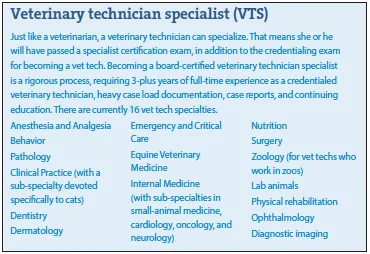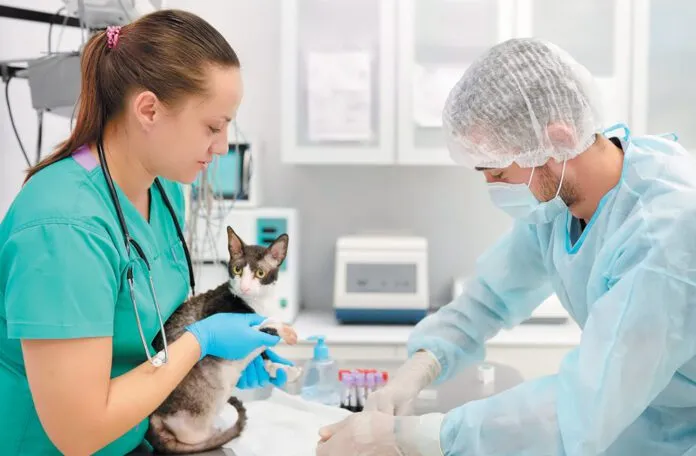Imagine if someone who didn’t go to nursing school could pass her or himself off as a nurse, work in a hospital or doctor’s office, and not lose their job or even be penalized if they were found out?
That’s exactly the situation in most of the country for impersonating a veterinary nurse, known professionally as a veterinary technician, or vet tech. The American Veterinary Medical Association’s Committee on Veterinary Technician Education and Activities (CVTEA) has strict standards of education for the title “veterinary technician,” but only 11 states have laws that restrict use of the term solely to people who have gone through the proper schooling and training. And only in a few states are there legal repercussions for people for whom the term is incorrectly applied.
Even in those states, misrepresenting yourself as a veterinary technician comes with little more than a legal slap on the wrist. The infraction is generally considered a misdemeanor. Only in Oklahoma can a person potentially face prison time for incorrectly calling him or herself a vet tech. The long and the short of it: in most states, it’s easy enough to call yourself a veterinary technician even if you’re not because of legal loopholes.
Don’t feel funny to ask at your vet’s whether staff members have gone through veterinary technician schooling as defined by the CVTEA or whether they are simply veterinary assistants. You’re not being nosy. You’re educating yourself about who’s taking care of your cat and in what capacity. It’s more than reasonable for you to know.
There are actually a few different levels of expertise. Following is a rundown.
The real definitions
Veterinary Assistant/Approved Vet-erinary Assistant/Certified Veterinary Assistant. Most often trained on the job but sometimes trained in a high school program or a short course of study at a college (although not graduating from the college), a veterinary assistant may be able to take your cat’s blood pressure before the doctor comes into the exam room as well as handle the front desk and duties like cleaning surgical suites. Having a veterinary assistant in a practice is not a bad thing; this person is valuable to the clinical team. But she or he has not gone through the formal education of a veterinary technician and has not sat for credentialing exams.
Veterinary Technician. According to the National Association of Veterinary Technicians in America, a veterinary technician must have graduated from a two-year program, either at a community college, college, or university that has been accredited by the American Veterinary Medical Association. She or he must also pass one, and sometimes two, credentialing exams. Depending on the state, the person will have the title certified veterinary technician (CVT), licensed veterinary technician (LVT), licensed veterinary medical technician, (LVMT), or registered veterinary technician (RVT).
 Whatever the designation, the vet tech will have been educated to be a true veterinarian’s nurse, providing direct patient care and clinical tasks under the direction of the veterinarian. In this role, veterinary technicians can give client consultations and patient assessments and also engage in clinical procedures that include laboratory and imaging diagnostics, anesthesiology, surgical nursing, and much more.
Whatever the designation, the vet tech will have been educated to be a true veterinarian’s nurse, providing direct patient care and clinical tasks under the direction of the veterinarian. In this role, veterinary technicians can give client consultations and patient assessments and also engage in clinical procedures that include laboratory and imaging diagnostics, anesthesiology, surgical nursing, and much more.
In actual practice, you may see veterinary technicians performing tasks below their level of expertise, fulfilling some of the role that a veterinary assistant would. But you should not see a veterinary assistant performing the tasks of a vet-
erinary technician.
Veterinary Technologist. A person with this title has had more education, having graduated from a four-year bachelor’s program accredited by the American Veterinary Medi-
cal Association.




